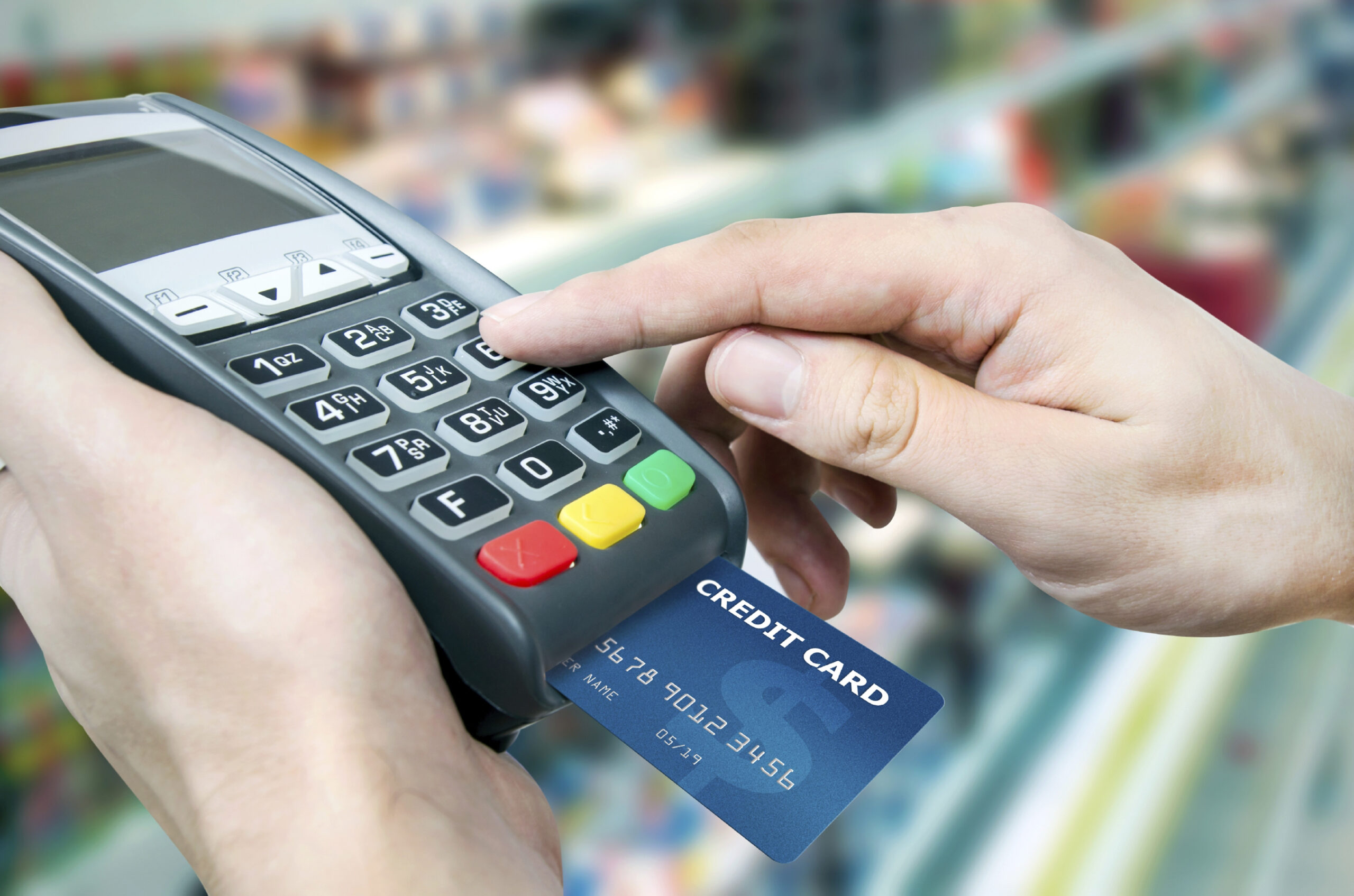Most people understand what the acronyms OMG, SMH, and LOL mean. But what about EMV? You may have heard of EMV, and possibly have seen new EMV readers at retailers, but what exactly is it? More importantly, why should you care?
EMV stands for Europay, MasterCard, Visa (the three companies that developed the technology) and is a new security feature embedded in ATM, debit, and credit cards. Instead of the old method of storing your information on a magnetic stripe, EMV cards store your information on a “chip”, which is a small integrated circuit. EMV cards are not “swiped” at terminals but are inserted or “dipped” into a card reader slot. While inserted, the card and the reader communicate back and forth to verify the card’s information. Once this process is complete, a signature or PIN may be required to complete the transaction. Actually, the process of checking out with an EMV card really isn’t much different than the old magnetic stripe way. The 2-way verification procedure may take a few extra seconds, but the additional security that EMV provides is definitely worth the wait!

So how much more secure is EMV technology? To put things in perspective, almost half of the world’s credit card fraud occurs in the United States, even though only a quarter of all credit card transactions happen here. In recent news, we’ve seen multiple cases of “skimmers” being found on gas pumps at local stations. These devices are placed on the pumps by criminals to extract the sensitive information stored on the magnetic stripes of credit and debit cards. The new EMV technology should virtually eliminate this type of card fraud. Every time an EMV card is used, a unique, one-time authentication cryptogram signature is generated. So, even if a criminal is able to obtain the information from your card at a retailer, they won’t be able to use it a second time elsewhere. This is a major improvement over the old magnetic stipe technology, which was non-changing, easy to copy, and capable of being used multiple times.
… almost half of the world’s credit card fraud occurs in the United States, even though only a quarter of all credit card transactions happen here.
The entire EMV transition process is going to take some time. Because of this, many EMV cards will continue to feature magnetic stripes in order to remain compatible with the older readers still used at some businesses. The payments industry gave retailers a deadline of October 1st, 2015 to switch their readers over to the new EMV technology. After this date, a “liability shift” took place. Basically, if a business does not provide an EMV reader, and someone uses a fraudulent chip card (through a magnetic stripe system), the liability falls on the business (instead of the card issuer). Even though EMV adoption is steadily growing, Visa expects it to take another 2-3 years for 60%-70% percent of transactions to be completed by EMV and 4-5 years to reach 90%.
When should you start using EMV technology? If you’ve received an EMV card from your card issuer, the answer is NOW! It’s very likely that many of your frequent shopping destinations already have an EMV reader installed. Instead of relying on the “old school” method of swiping your card, take a few extra seconds go the EMV “insertion” route. The new security features and peace of mind are well worth the extra time and effort!








